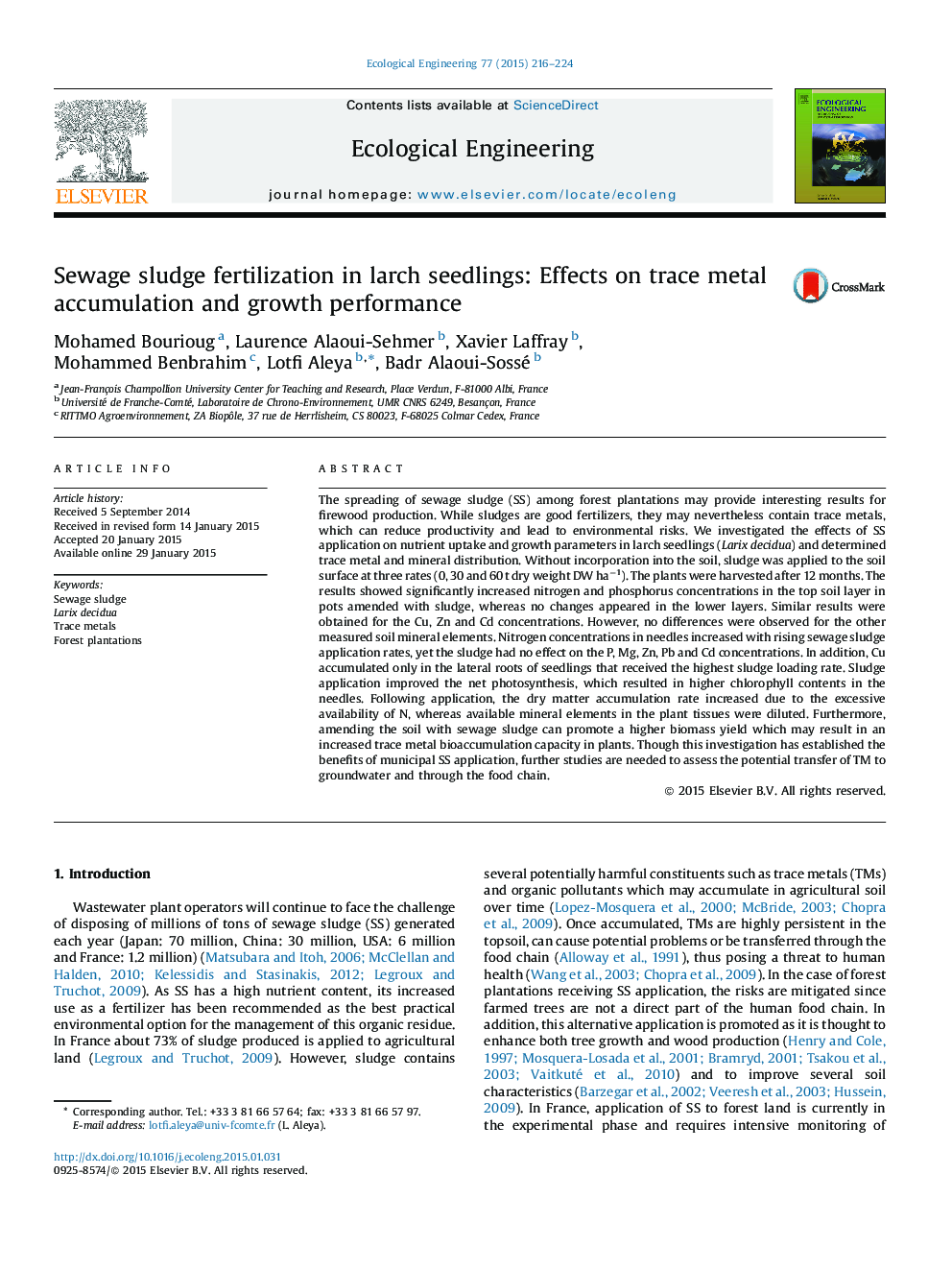| Article ID | Journal | Published Year | Pages | File Type |
|---|---|---|---|---|
| 4389267 | Ecological Engineering | 2015 | 9 Pages |
•Assessment of eventual toxicity of sewage sludge application to forest soil.•Effects of sewage sludge on young larch seedlings (Larix decidua).•Increased concentrations of trace metals and nutrients in topsoil layer.•Photosynthesis increased with increasing sewage sludge application rates.•Trace metal concentration increased significantly in treated seedlings.
The spreading of sewage sludge (SS) among forest plantations may provide interesting results for firewood production. While sludges are good fertilizers, they may nevertheless contain trace metals, which can reduce productivity and lead to environmental risks. We investigated the effects of SS application on nutrient uptake and growth parameters in larch seedlings (Larix decidua) and determined trace metal and mineral distribution. Without incorporation into the soil, sludge was applied to the soil surface at three rates (0, 30 and 60 t dry weight DW ha−1). The plants were harvested after 12 months. The results showed significantly increased nitrogen and phosphorus concentrations in the top soil layer in pots amended with sludge, whereas no changes appeared in the lower layers. Similar results were obtained for the Cu, Zn and Cd concentrations. However, no differences were observed for the other measured soil mineral elements. Nitrogen concentrations in needles increased with rising sewage sludge application rates, yet the sludge had no effect on the P, Mg, Zn, Pb and Cd concentrations. In addition, Cu accumulated only in the lateral roots of seedlings that received the highest sludge loading rate. Sludge application improved the net photosynthesis, which resulted in higher chlorophyll contents in the needles. Following application, the dry matter accumulation rate increased due to the excessive availability of N, whereas available mineral elements in the plant tissues were diluted. Furthermore, amending the soil with sewage sludge can promote a higher biomass yield which may result in an increased trace metal bioaccumulation capacity in plants. Though this investigation has established the benefits of municipal SS application, further studies are needed to assess the potential transfer of TM to groundwater and through the food chain.
